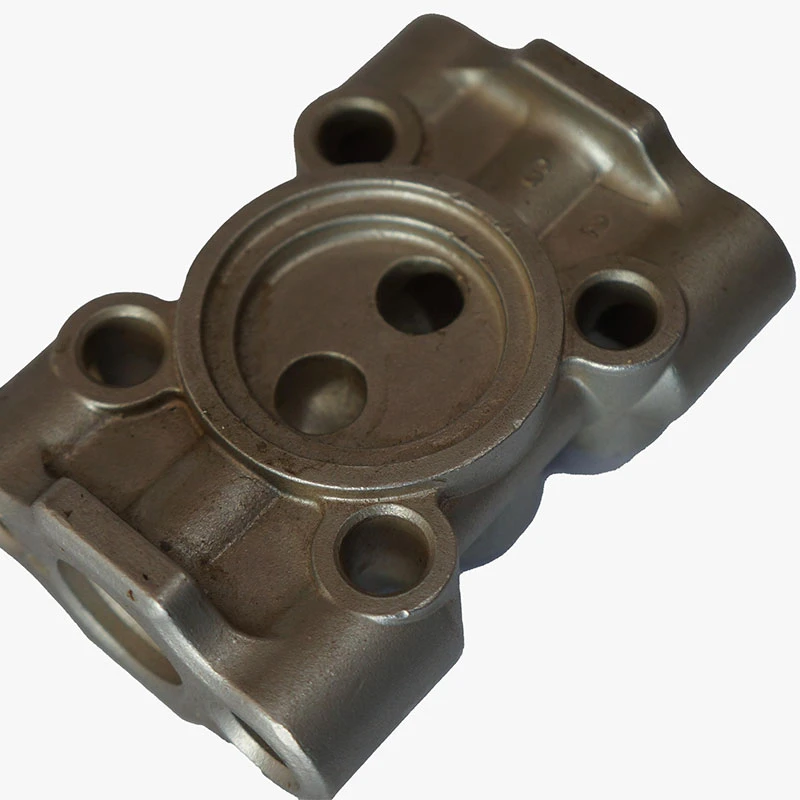Innovative Techniques in Centrifugal Die Casting for Enhanced Manufacturing Efficiency and Quality
Centrifugal Die Casting An Overview
Centrifugal die casting is a specialized metal casting process that leverages centrifugal force to produce high-quality components with exceptional dimensional accuracy and surface finish. It is predominantly used for manufacturing cylindrical parts such as pipes, sleeves, and various automobile components. This method has gained popularity in various industries, owing to its efficiency and ability to handle a wide range of metals.
The Process of Centrifugal Die Casting
The centrifugal die casting process typically involves pouring molten metal into a revolving mold. The key components of this process include the die, which is the mold that holds the molten metal, and the centrifugal machine that rotates the mold at high speeds. Here’s a step-by-step breakdown of the process
1. Preparation of the Die First, the die is constructed, usually from steel or other durable materials that can withstand high temperatures. The die is carefully designed to ensure that the final product meets the required specifications.
2. Melting the Metal The metal, often aluminum, magnesium, or copper alloys, is heated in a furnace until it reaches its molten state. The selection of metal depends on the required properties of the final product and its intended application.
3. Pouring the Metal Once the metal is sufficiently melted, it is poured into the rotating die. The centrifugal force generated by the die's rotation pushes the molten metal against the mold walls, ensuring that it fills every corner and detail of the die.
4. Cooling and Solidification After the molten metal fills the mold, it is left to cool and solidify. The cooling rate can significantly impact the properties of the casting, such as its strength and hardness.
5. Ejection of the Casting Once the metal has cooled sufficiently, the die is stopped, and the casting is ejected from the mold. This step needs to be carefully controlled to avoid damaging the newly formed metal piece.
6. Finishing Processes After ejection, the casting often goes through additional processes such as machining, polishing, or surface treatment to achieve the desired specifications and finish.
Advantages of Centrifugal Die Casting
Centrifugal die casting offers several advantages over traditional casting methods
centrifugal die casting

- High Quality The use of centrifugal force helps eliminate porosity and ensures a denser, stronger final product
. The process also minimizes defects such as gas entrapment, making it ideal for high-performance applications.- Cost-Effectiveness Although the initial setup costs for dies may be high, the efficiency and speed of the centrifugal die casting process lead to lower production costs in the long run, especially for high-volume production runs.
- Versatility This method can be used with a variety of metals, allowing manufacturers to switch materials based on their specific needs without significant changes to the process.
- Dimensional Accuracy The centrifugal action aids in achieving superior dimensional tolerances, which is crucial for components that must fit together precisely.
Applications of Centrifugal Die Casting
Centrifugal die casting is extensively used in industries where precision and durability are paramount. Common applications include
- Automotive Industry Parts like brake drums, transmission housings, and engine blocks are commonly manufactured using this process.
- Aerospace Components such as housings, fittings, and structural elements benefit from the high strength-to-weight ratio achieved through centrifugal casting.
- Consumer Goods Items such as plumbing fittings, electrical housings, and decorative fittings also utilize this technology for enhanced performance and aesthetics.
Conclusion
Centrifugal die casting stands out as a robust manufacturing process that combines efficiency with high production quality. Its ability to produce complex shapes with excellent integrity and surface finish makes it invaluable across various sectors. As technology evolves, we can expect further enhancements in the centrifugal die casting process, allowing for greater production capabilities and even wider applications in the manufacturing world.
-
OEM Sand Cast Pump Valve Fittings - Baoding Hairun Machinery And Equipment Trading Co., Ltd.NewsJul.31,2025
-
OEM Sand Cast Pump Valve Fittings - Baoding Hairun | Precision Engineering, CustomizableNewsJul.30,2025
-
OEM Sand Cast Pump Valve Fittings - Baoding Hairun Machinery And Equipment Trading Co., Ltd.NewsJul.30,2025
-
OEM Sand Cast Pump Valve Fittings - Baoding Hairun Machinery And Equipment Trading Co., Ltd.NewsJul.30,2025
-
OEM Sand Cast Pump Valve Fittings - Baoding Hairun Machinery|Precision Engineering&Fluid ControlNewsJul.30,2025
-
OEM Sand Cast Pump Valve Fittings - Baoding Hairun Machinery And Equipment Trading Co., Ltd.NewsJul.30,2025















